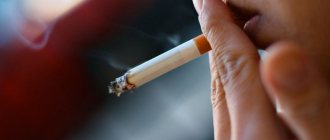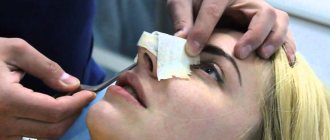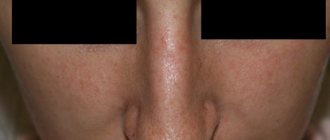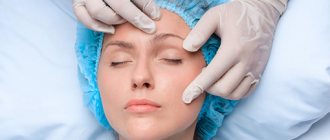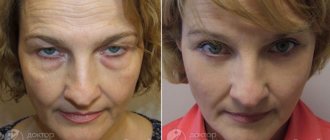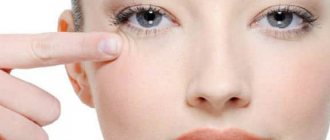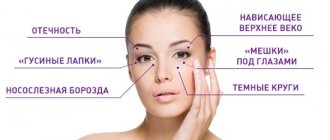Every fifth plastic surgery is rhinoplasty. Dissatisfaction with the nose given by nature pushes not only women, but also men under the surgeon’s knife. The operation allows you to change the shape, size, eliminate defects, and normalize breathing. Successful completion of the operation is not enough to obtain positive results. Surgical intervention is followed by unpleasant rehabilitation after rhinoplasty. For those planning an operation, it is important to understand what negative consequences and complications may arise and what to do to speed up recovery.
Features of the rehabilitation process after rhinoplasty
The nose is not only a part of the face, but also a very important organ with active blood circulation and a complex lymphatic system. And even the most skilled surgeon and a competently performed operation are not able to save the patient from risk. There is always at least a minimal probability of negative consequences occurring.
A feature of the recovery period after rhinoplasty is the need to strictly follow the doctor’s recommendations.
How long will you have to limit yourself? It all depends on the degree of intervention, age, skin condition and health of the patient.
The first month is especially important for successful rehabilitation. It requires close contact with the surgeon to adjust treatment regimens, prescribe new medications or physical therapy procedures. But even with such a targeted approach, it will take more than one week to regain vitality. The nose will take on its final shape only a year after the plastic surgery.
Diagnosis of a nasal fracture
A nasal fracture is most often diagnosed visually. But still, the doctor collects an anamnesis, that is, finds out the circumstances of the injury. Based on the mechanism of injury, one can judge the condition of the cartilage and nasal bone. Palpation determines the mobility of cartilage and the degree of pain and swelling, the condition of the mucous membranes, and determines the curvature of the nasal septum.
An x-ray will show the true position and condition of the “skeleton” of the nose. CT and radiography make it possible to fully characterize the extent of the damage, including the condition of the surrounding areas of the face and head (skull bones, sinuses, etc.).
The doctor also prescribes laboratory tests:
- general analysis of urine and blood;
- blood biochemistry;
- electrocardiogram.
These studies allow you to analyze the general condition of the patient. When the nose is broken, hematomas form under the eyes and there is almost always bleeding. But bleeding can be both external and internal.
If the approximate level of blood loss can be determined by external bleeding, then internal blood loss can only be judged by laboratory tests. Blood from the nose may contain glucose - this indicates damage to the spinal canal with the release of cerebrospinal fluid. Such serious damage indicates a fracture of the cribriform plate.
Note! A severe fracture of the nose is accompanied by painful shock and large blood loss
Collecting analysis helps determine additional consultations with doctors. Thus, a fracture of the nose due to a fall during an epileptic seizure requires consultation with a neurologist, combined trauma of the nasal bones and eye orbits requires consultation with a maxillofacial surgeon, etc.
Schematic illustration of a nasal fracture
Main stages of recovery
The entire rehabilitation process is usually divided into 4 main periods:
- The first week is the most difficult time, when the patient experiences difficulty with nasal breathing, suffers from pain and swelling, and poor health.
- The second stage (7-12 days) - the pain is still quite significant, any touch causes discomfort.
- The third stage (2-3 weeks) - bruises and hemorrhages begin to resolve, swelling subsides, the skin acquires sensitivity and a healthy color. Scars and cicatrices fade and become less noticeable.
- The fourth stage (4th week and after) - the pain goes away, the nose acquires the desired shape and proportions. It is at this stage that it is easy to detect indications for a repeat procedure.
Sick leave for the day of surgery and the recovery period is usually not issued. But if rhinoplasty was difficult and resulted in many complications, it is possible to provide a certificate of incapacity for work for no more than 10 days.
Photos before and after
In the photo you can see the patient before surgery and after removing the plaster, as well as recovery by day:
First days
If rhinoplasty was performed under local anesthesia, the patient is allowed to leave the hospital on the same day, after the anesthesia wears off. The use of full anesthesia will require you to remain under medical supervision until the next morning. There is no need to stay in the clinic any longer.
When sending a patient to complete his treatment at home, the surgeon gives the following recommendations:
- maintain bed rest, move less and not strain;
- do not remove or try to look under the splint;
- After the operation, you should not laugh, sneeze, blow your nose, tilt your head, or make sudden movements.
Nasal turundas placed by the surgeon must be changed as they swell, as well as monitor the condition of the plaster cast, regularly check the temperature and record general well-being.
In the first days after rhinoplasty, it is very important not to catch a cold. A runny nose and cough will create severe discomfort and can completely cancel out all the work of the plastic surgeon. If your nose begins to bleed and other alarming symptoms appear, contact your ENT doctor or the specialist who performed the operation.
Total duration of rehabilitation period
The duration of recovery after the procedure is primarily influenced by the type of intervention. For greater clarity, we will combine all the dates for returning to normal life in a table.
| Nature of the operation | Duration of rehabilitation |
| Open plastic | A year or more |
| Closed plastic | 6–7 months |
| Correction of nostrils and nose wings | 2.5–3 months |
| Improving the shape of the tip of the nose | 7–8 months |
| Rhinoplasty using an endoscope | 2–3 months |
| Repeated operation | 1–1.5 years |
| Nose reconstruction | Year |
The best time for the procedure is from 25 to 45 years. In older patients, tissue regeneration slows down and rehabilitation is noticeably prolonged. For people over 55–55 years of age, rhinoplasty may be contraindicated due to various systemic and chronic pathologies.
The thickness of the skin also affects the healing time. With oily, acne-prone dermis, the scars disappear slowly, and the swelling takes a long time and is difficult to subside.
On a note
- In the hospital, after examination and rhino- or endoscopy (instrumental examination of the nasal cavity), the ENT specialist must assign the patient an x-ray of the nasal bones. Based on these studies, a diagnosis is made, and if surgery is needed, its strategy is outlined. If nasal swelling has not yet developed, it is better to perform surgery immediately. If there is swelling, the victim will be sent home for a week.
- The operation (reposition of bone fragments) can be performed under local or general anesthesia. Teenagers and adults, as a rule, have their noses “fixed” under local (usually topical) anesthesia. During the operation, the surgeon uses special instruments (elevators, similar to a narrow blade) and his own fingers to reassemble the broken nose. And then he fixes it from the inside with special tampons, and from the outside with plaster or thermoplastic.
- Tampons are removed 1–2 days after surgery, and the cast is removed after about a week. For a month, you need to protect your nose from re-injury and infections. It's better to sleep without bumping into a pillow.
Nose fracture
The phrase “nose bones” does not sound entirely correct. The nose is made up of five cartilages that are attached to the nasal bone of the skull. Cartilages - quadrangular cartilage, 2 movable pterygoid cartilages and 2 movable lateral cartilages. How quickly do bones heal after a broken nose?
How to get rid of swelling and hematomas as quickly as possible
Swelling and bruising after rhinoplasty is quite common. All patients, without exception, encounter them, so there is no need to worry about this.
A special compression bandage will help prevent the appearance of unpleasant symptoms, which compresses the lymphatic vessels and thereby maintains the shape of the nose and does not allow it to swell. After removing the splint for 14–20 days, it is recommended to cover the bridge of the nose with a bandage at night, thereby preventing morning swelling. Such simple measures will speed up tissue healing without the use of expensive products.
Pay attention to the time of the operation - the procedure on menstruation days is always accompanied by heavy bleeding and the appearance of large dark blue hematomas. Carrying out two procedures simultaneously—rhinoplasty and blepharoplasty—can cause severe swelling under the eyes.
How long do swelling and bruising last? It all depends on the individual characteristics of the body. For some, the main symptoms disappear after a week, for others they persist for a year. Physiotherapy and massage will help you quickly cope with the problem.
Physiotherapy will speed up healing
To alleviate the patient’s condition, improve blood circulation and lymph flow in the tissues of the nose, the following physiotherapy procedures are widely used:
- electrophoresis;
- microcurrents;
- phonophoresis;
- Darsonval.
Starting from the second week, all patients, without exception, are prescribed ultrasound. High-frequency waves strengthen the walls of capillaries, accelerate the resorption of scars and seals, prevent postoperative bleeding and reduce swelling.
Massage and self-massage
For swelling of the periosteum and soft tissues, massage is indicated - manual or hardware lymphatic drainage.
You should massage your nose yourself very carefully, gently squeezing the tip with two fingers and moving to the bridge of the nose for 30 seconds. Such movements can be performed up to 15 times a day.
Medicines during rehabilitation
Medicines can also ease the recovery period. The following medications are most often used after rhinoplasty:
- diuretics - Furosemide, Hypothiazide, Veroshpiron, Torasemide, herbal teas containing lingonberry leaves will help with severe swelling that reaches the cheeks;
- Lyoton and Troxevasin ointments will help prevent morning swelling;
- if the temperature rises, take an antipyretic - Paracetamol, Voltaren, Ibuklin;
- hematomas will be relieved by means that improve blood circulation - Bruise off, Traumeel, Dolobene;
- Contractubex will help soften scars and remove them;
- for nasal congestion, use nasal drops - Xylometazoline, Otrivin, Nazivin;
- If allergies occur, take Diazolin, Suprastin, Cetrin, Telfast.
For the first 2 weeks after surgery, it is recommended to use vitamin-mineral complexes and immunostimulants: tincture of ginseng, eleutherococcus or echinacea. To prevent herpes, use Fenistil Pencivir and Acyclovir gel.
If tablets and ointments do not help with swelling, the surgeon prescribes Diprospan. The injection is given both in the muscle and in the soft tissue of the nose.
Antibiotics - Ampicillin, Gentamicin, Amoxicillin - will help to avoid secondary infection. Antibacterial treatment should be accompanied by probiotics. They will protect the gastrointestinal tract from the harmful effects of antimicrobial therapy. In addition, treat tissues twice a day with an antiseptic.
For external use, you can use Dimexide. The drug has established itself as an excellent anti-inflammatory and analgesic agent. To make a lotion, use a 25% solution - dip a gauze cloth into it, squeeze it out and apply it to the nose for 30 minutes.
Ways to facilitate rehabilitation
The duration and severity of rehabilitation after rhinoplasty depends on the individual characteristics of the body. The following can affect the quality of the process:
- level of quality of implementation of the intervention;
- compliance with recommendations in the process of preparation and recovery;
- performing additional manipulations prescribed by the surgeon.
The doctor strongly recommends not drinking alcohol 2 weeks before rhinoplasty and 1–2 months after surgery. The same goes for smoking. Bad habits aggravate the possibility of developing complications.
The doctor must apply a tight bandage for closed rhinoplasty, and a plaster cast for open surgery. You cannot remove or move the device yourself. Unpleasant sensations (tightness, itching) must be endured. The doctor removes the plaster after 7–10 days. When the bandage has shifted or fallen off on its own, it is necessary to visit the surgeon prematurely. After removing the cast, the doctor will indicate the need to use strips. The duration of use of adhesive fixing strips is determined individually.
The doctor will recommend rinsing the nose after removing the stitches (7-14 days). The procedure helps accelerate the restoration of natural breathing. It is also important to take care of the condition of the scars. Regular antiseptic treatment will prevent the development of inflammation.
For skin care after surgery, it is advisable to use neutral products. You cannot wash your face in the usual way until the cast is removed. The use of cosmetics is also not recommended. It may be difficult to clean your hair after rhinoplasty. Hygiene procedures are carried out by slightly tilting the head back. You can visit a hairdresser and ask others for help.
To speed up healing, the doctor may prescribe a course of physiotherapy. Hardware manipulations after rhinoplasty can improve the condition of the skin, relieve swelling, and facilitate recovery. Procedures begin after 7–14 days. Shown:
- phonophoresis;
- darsonvalization;
- microcurrents.
Note! To prevent the formation of a hump, callus, and to alleviate the general condition, the surgeon prescribes a special massage. The procedure is performed by a specialist. The surgeon categorically prohibits performing classical tissue kneading.
What not to do after surgery
When planning to undergo rhinoplasty, you should prepare for many restrictions that you will have to comply with during rehabilitation. Some of them need to be performed only in the first days, others - over several months.
Prohibitions in the early period
As a rule, the early postoperative stage includes restrictions imposed on the patient until discharge from the hospital. But we will extend it and look at what not to do in the first week:
- paint;
- expose yourself to any physical activity;
- grimace;
- fly on airplanes;
- wash your hair and face.
If you need to do your hair, use the option of throwing your head back, like in a hairdresser.
At first, it is recommended to sleep only on your back, with a high pillow under your head. It is also advisable to avoid stress, not drink alcohol, and avoid spicy, too hot or cold foods.
When caring for your nose, don't forget about your face. Cleanse your skin with a cotton swab soaked in hypoallergenic toner or micellar water. Avoid any creams or cleansing procedures.
Late deadline restrictions
A week passed, the doctor removed the cast and you breathed freely. But it’s too early to rejoice. There are still many restrictions that need to be followed for some time:
- During the rehabilitation period, sports are absolutely contraindicated, only walking at an easy pace. But even when returning to training, avoid exercises that cause a rush of blood to the head;
- for 1–1.5 months, try not to blow your nose;
- for the same period, exclude swimming in the pool and any other body of water from your life;
- you cannot sunbathe, go to the bathhouse or sauna, take a contrast shower, or wash for a long time in hot water;
- beer, champagne, low-alcohol drinks are banned for six months. This restriction does not apply to red wine - it is permissible to drink it 30 days after plastic surgery.
Avoid any cosmetic procedures for at least 3 months. You will also have to wait a bit with sex.
How to properly clean your nose after rhinoplasty
If crusts form on the mucous membrane and ichor accumulates, the nose can be gently cleaned with a cotton swab moistened with peach oil or Vitaon balm.
Another quick way to get rid of discharge and crusts is to rinse with pharmaceutical products or a solution of sea salt. You can irrigate the mucous membrane at least every hour, the main thing is not to dry it out.
Pregnancy after rhinoplasty
Why can't you get pregnant after surgery? The fact is that during the period of bearing a child, serious hormonal changes occur in a woman’s body, which may not have the best effect on scarring and tissue healing. Therefore, postpone pregnancy for at least 6 months, and preferably a year.
Possible complications
All unpleasant consequences of rhinoplasty are divided into 2 groups - aesthetic and functional. The first include unplanned deformation of proportions, drooping of the tip of the nose, and asymmetry. Functional deficiencies are those that cause difficulty breathing.
Complications can develop at any time - both immediately after rhinoplasty and a month later.
Early consequences include:
- severe swelling. If they are unevenly distributed, temporary facial asymmetry may be observed;
- numbness of the nose, tongue and upper lip. It occurs as a result of general anesthesia.
A more serious danger is posed by complications, which in the normal course of the recovery period should not exist in principle:
- damage to bone and cartilage tissue;
- infection of the surgical site;
- necrosis of skin and bone;
- seam divergence;
All these problems can be caused not only by the surgeon’s error, but also by the individual characteristics of the patient’s body. Any of these complications requires urgent medical attention.
Long-term consequences
Very often, negative consequences arise after the end of rehabilitation. In this case, we are most often talking about distortion of odors or complete disappearance of the sense of smell, the unexpected appearance of allergies, narrowing of the nasal canal and breathing problems.
In the long term, other unexpected complications may appear:
- swelling of the tip of the nose;
- the formation of adhesions and rough scars, the removal of which requires separate intervention;
- acute or chronic rhinitis;
- depression (dent) on the back of the nose;
- callus;
- deviated septum;
- hard bumps on the periosteum;
- facial nerve damage.
All these complications can result from poor nasal care during the rehabilitation period.
Contrary to popular belief, the number and severity of the consequences do not depend in any way on the time of the manipulation - the operation can be done in summer and winter. The main thing is that you have time for rehabilitation.
Typical Side Effects
Edema is recognized as a natural reaction of the body that becomes a response to surgical intervention. After rhinoplasty, this manifestation is at its maximum brightness. The operated tissues swell, the swelling spreads to neighboring areas.
The entire center of the face suffers: nose, under-eyes, cheeks, upper lip. The swelling rarely goes below. The greatest severity of edema is observed after open rhinoplasty.
The operation may result in bruising. Operated tissue rarely produces significant hematomas. Especially if the surgeon used a closed intervention technique. The nose is covered with a plaster splint for 1–2 weeks. During this time, local hematomas have time to resolve. Bruises that often appear under the patient’s eyes spoil the appearance.
Bleeding after rhinoplasty is stopped by tampons that completely cover the nasal passages. They disrupt natural breathing. The presence of turuntulas soaked in medical oil and various body fluids can cause an unpleasant odor and negative sensations. A pressure bandage on the nose often causes tissue numbness, and the patient has a desire to scratch the skin.
Removal of additional devices by a doctor does not always bring relief from unpleasant symptoms. Typical side effects during the recovery period include:
- dryness;
- nasal congestion;
- general discomfort.
Attention! Manifestations persist for up to 1.5–3 months, in rare cases longer. The reactions of organisms are individual, the speed of recovery varies.
Revision rhinoplasty
Unsuccessful rhinoplasty often becomes the reason for returning to the doctor. However, the secondary procedure may be much more difficult and more expensive than the first. It often ends in complications and requires long-term rehabilitation. Sutures are removed only on days 7–8, and swelling and hematomas do not disappear for 2 months.
Repeated rhinoplasty is performed no earlier than a year after the primary, when the body is sufficiently strong and the nose takes its final shape.
Advantages of nasal bone repositioning at GMS Hospital
Experienced otolaryngologists at GMS Hospital perform all types of repositioning of nasal bones in case of a fracture. In our surgical center, such manipulations are carried out using minimally invasive methods, which eliminates surgical scars and scars.
A team of highly specialized specialists works on each clinical situation, which allows us to evaluate it from all sides and select the most optimal method of therapy. And the use of modern diagnostic equipment makes it possible to reliably determine the extent of damage to soft and hard tissues and carry out the procedure with precision.
The manipulation is performed within an hour if there are no contraindications (no severe swelling, concussion, etc.). The surgery center of the GMS clinic operates 24 hours a day. An appointment with an ENT surgeon can be made by phone or online.
Expert recommendations
How to reduce the likelihood of unpleasant consequences? Experts advise paying special attention to your diet and excluding all types of berries, citrus fruits, tomatoes, vinegar, watermelon, grapes, garlic, apricots, peaches, fish oil and cranberry juice from your diet for 2 weeks.
Also, during the rehabilitation period, it is advisable to abandon blood thinners and weight loss medications. Do not use nicotine patches or chewing gum.
Also read: 11 tips from a surgeon for a quick recovery after surgery.
Patient reviews
Every patient's situation is different. Many people complain about long-term swelling after surgery. Some people do not like the changes in appearance that have occurred. Breathing problems are considered a common problem. Normal function is not always restored after completion of rehabilitation. Doctors offer different ways to solve problems, but treatment does not always help achieve the expected result.
The patient complains that during the rehabilitation process the tip turned blue, lumps appeared, and a hump appeared.
The patient will have to have the scar excised to remove the hump that formed during recovery after surgery and callus removal.
The patient complains that breathing is impaired after completing standard recovery.
The patient complains about the persistence of edema for a year, when the main recovery has long been completed.
The patient received a semblance of a beak thanks to the dips. The treatment prescribed by the surgeon did not help, but worsened the situation.
Reviews from patients and cosmetologists about rehabilitation after rhinoplasty
Irina, 25 years old, Yaroslavl:
Since childhood I suffered from snub nose, so I decided to get a new nose. It was very scary, but since I had already gotten ready... I took a vacation from work. Everything went well. There were no complications other than swelling and bruising. At first I couldn’t breathe at all, Nazivin was dripping. Then the condition returned to normal. The nose became smooth and straight, much more beautiful than it was before.
Valeria, 28 years old, Tomsk:
I went for rhinoplasty to narrow the round tip of my nose. The rehabilitation went somehow unnoticed, the splint fell off on its own, and I didn’t take any painkillers. The only BUT is that the skin on my nose after the operation became terribly oily. Whatever I didn’t use. Tonics, lotions, mattifying powder - all to no avail. I read about grape seed oil and it really helped. Sebum secretion has returned to normal.
Georgy, plastic surgeon, 22 years of professional experience:
Strict adherence to the doctor’s recommendations during the rehabilitation period is one of the main components of a successful operation. There are few rules and there is nothing complicated about them, but ignoring them can nullify the efforts of even the best surgeon. I advise you to pay attention to the cost of rhinoplasty - you cannot save when it comes to beauty and health. Choose the best clinic and everything will be fine.
Treatment of nasal bone fracture
Basically, treatment for a nasal fracture consists of repositioning and fixing displaced fragments of bone and cartilage in the nasal area. But there is also a need for the use of pharmaceuticals. For example, in case of an open fracture, that is, in case of damage to the skin, it is mandatory to be vaccinated against tetanus.
Medicines
It is recommended to prescribe drugs that have a symptomatic effect:
| Group of drugs | Examples | Photo |
| Painkillers | KetorolacTramadol | Ketorolac ampoules |
| Sedatives | PhenobarbitalOxazepamTenotenValocormid | Oxazepam |
| Antibiotics | Ceftriaxone | Ampoule with ceftriaxone |
| Hemostatic medications | DicynoneVicasolAminocaproic acid | Vikasol ampoules |
When choosing drug treatment for a nasal fracture, it is necessary to take into account the patient’s allergic reactions to drugs, and it is also necessary to read the instructions for the medications in order to prevent possible side effects and overdose.
Physiotherapy
Subsequent treatment, which helps reduce the time for fusion of the cartilage tissues of the nose, consists of physical therapy. Additional treatment methods include UHF procedures, VHF exposure, and infrared radiation. It will be extremely useful to take a vitamin course and introduce foods rich in vitamins, minerals and calcium for bones into your diet.
Reposition is the restoration of the nose, returning it to its pre-injury condition. A surgical procedure often performed by doctors. Nasal fractures account for fifty percent of all facial injuries. Carried out in public medical institutions and private clinics.
Why is nasal realignment prescribed? Open and closed nose reposition.
This is a surgical procedure aimed at restoring the functioning of the nose and restoring its appearance..
Thanks to this surgical intervention, surgeons connect the cracked fragments and thereby help them heal quickly and correctly.
The ability to completely restore the appearance of the nose depends on the method of injury and the severity of the fracture. There are two types of reduction: closed and open. The first type includes fractures without violating the integrity of the skin. Open reduction is aimed at matching the bones and skin.
Most patients wonder whether it hurts to straighten the nose after a fracture?
- The procedure is painful, but it is softened by an anesthetic administered in advance.
- If more than ten days have passed since the injury, then the procedure to restore the nasal bones will be more painful. The surgery will be performed under general anesthesia.
Alignment (straightening) of the nasal bones after a fracture
During transportation to a medical facility from the site of injury, the victim is recommended to be in a sitting position. Accompanying people help carry out manipulations to stop bleeding. Cold must be applied to the fracture site.
To establish a final diagnosis in a hospital, the patient is given:
Diagnostics before nasal repositioning
- Palpation examination
- X-ray of the nasal bones
- nasal endoscopy
- anterior and posterior rhinoscopy of the nose
- in some cases MRI and CT
Afterwards, the doctor prescribes repositioning of the nasal bones. Surgery will be carried out depending on the complexity of the fracture, age, open or closed form, as well as the presence of a concussion and swelling of the mucous membrane in the nasal passages. Fixation of the nasal bones from the outside with the help of plaster or dense rollers is carried out by crushing the bones into small parts.
A contraindication to repositioning the nasal bones is the presence of a concussion as a result of an injury.
In this case, surgery is postponed for one week. If there are other complications after injury, the procedure to restore the nasal bones is postponed for a longer period. After three weeks, a bone callus will begin to form. It will become impossible to perform a reduction on the patient. To restore the nasal bones, rhinoplasty will be required, which will be performed under general anesthesia.
Repositioning of the nasal bones with an open fracture
Before performing the restoration of the nasal bones, manipulation measures are performed to stop nosebleeds. Turundas or gauze napkins are placed in the nasal passages. They are not fixed very deeply, but tightly enough so as not to aggravate the situation or displace bone fragments.
An open fracture is accompanied by damage to the integrity of the skin.
The specialist treats the edges of the wound with a three percent solution of hydrogen peroxide or another antiseptic solution. Then surgery is performed to restore the nasal bones, depending on the type and location of the fracture. During surgery to restore nasal bones in an open fracture, fragments that are not connected to other bones and soft tissues are removed. An experienced specialist tries to preserve the smallest pieces of bone so that with further fusion the appearance of the patient’s nose and face as a whole does not change much.
- After treating the wound and restoring bone fragments, the appearance of the skin is assessed. If the wound is not inflamed and sufficiently cleaned, then the specialist will stitch it up.
- In case of severe contamination or the presence of purulent infiltrate, the wound remains open for further treatment. Manipulative measures are aimed at stopping bleeding.
- The patient is prescribed antibiotic therapy. Damaged skin is treated with antiseptic solutions. Healing ointments are also placed into the wound.
Reposition of nasal bones with a closed fracture
Reposition of the nasal bones in a closed fracture is carried out under local anesthetic. Performed manually by a surgeon. The mucous membrane of the nasal passages is moistened with an antiseptic solution in the form of a spray. Outside, the place is injected with Novocaine.
Methods for repositioning nasal bones
For a simple fracture, the doctor sets the bones with a few finger movements. When the fragments are displaced, a specialized surgical instrument is used - an elevator, which helps to place the bone fragment in its original place. When the surgeon puts all the bone fragments in place, gauze swabs soaked in antibiotics are placed in the nasal passages. A tight tamponade holds the bones in place to keep them in place. Tampons are placed in the nasal passages for four days, breathing through the mouth during this entire time. Outside, the doctor will apply a tight plaster cast to fix the bones and prevent them from moving again. After four days, the tamponade is removed and restored by breathing through the nose.
Photo gallery (nose repositioning required):
When is the cast removed after repositioning the nasal bones?
If the dynamics are positive, the plaster is removed in the dressing room of the hospital after 6-14 days, depending on the severity of the fracture. Repeated trauma to the nose should be avoided for a whole month. Sleeping is done lying on your back or side. You cannot rest your nose on the pillow and sleep in this position.
Plaster on the nose after a fracture
The nose is the most protruding part of the body. This is why he faces any unexpected encounters first. A nasal fracture is a mechanical injury caused by a violation of the anatomical structure of the nasal bones. This is the most common injury among all injuries to the skull bones, which is associated with their central location and protrusion above the surface of the face. Typically, nasal injuries occur in men in the age range of 16 to 40 years. The causes of the pathology are very diverse: from banal fights and domestic injuries to car accidents and professional sports - wrestling, boxing. The diagnosis of the pathology is not difficult and is based on the victim’s complaints and examination data.
Types of nasal bone fracture:
- Without deformation of the outer part and displacement of the bones - a minor injury, which is a crack in the bone.
- With deformation of the outer part and displacement of the bones - a more serious injury with unpleasant consequences.
- Closed - preserving the integrity of the skin and periosteum.
- Open - with a violation of the integrity of the skin and the presence of exposed bone and its fragments in the wound. At the same time, the risk of blood loss and infection is quite high.
- Simple or complex depending on the number of fracture lines.
Most often, there are fractures with lateral displacement of the back and tip of the nose, and more rarely - flattened fractures with penetration of the back of the nose.
The severity of the damage is determined by the sharpness, speed, force of the blow, and depends on the object with which it was struck and the angle at which the blow occurred. The most severe is a fracture of the nose caused by a side blow to it.
Severity of damage to health due to a broken nose:
- Without displacement - slight harm to health,
- With displacement - harm to health of moderate severity,
- A fracture with impaired facial expressions and facial deformation is a serious injury to health.
Etiology
Causes of a broken nose:
- Domestic injuries, which include falls associated with alcohol intoxication, epileptic seizures, fights, accidents, crime. Falls are the most common cause of nasal fractures in children.
- Sports injuries in contact martial arts and team sports.
- Injuries sustained in car accidents, at work, or during combat.
Symptoms
Clinical signs of a nasal fracture:
- A nasal fracture causes severe pain. The patient is in shock or even fainting.
- Slight bleeding from the nasal slits occurs, which is blocked quickly and independently. In quite rare cases, blood flows in a stream and requires nasal packing. Such bleeding can lead to significant blood loss.
- The skin and mucous membranes are damaged, which can be manifested by the accumulation of air in the superficial fat layer. During the examination, the doctor determines whether the wound communicates with the nasal cavity.
- Then swelling of the soft tissues of the nose, eyes and cheekbones develops, bruising appears in the area of the cheekbones and eyelids. Hemorrhage under the skin occurs as a result of damage to blood vessels. After a day, swelling of the nose and surrounding tissues becomes extensive. Bruises form around the nose and under the eyes. Noticeable swelling in the impact area allows you to know whether the nose is broken. This symptom, combined with pain, deformity and bleeding, gives the characteristic clinical picture of a nasal fracture.
- Difficulty in nasal breathing is caused by displacement of bone fragments, deformation of the nasal septum, and increasing swelling.
- In case of a fracture of the bone and cartilaginous structures of the nose, the crunching of the fragments is determined by palpation - a clear sign that allows the traumatologist to make the correct diagnosis and prescribe adequate treatment.
- If the nose is broken, mucus continuously leaks from it.
- In the future, infection may occur and fever, pain and redness may appear at the site of the lesion. Softening of the tissue indicates the beginning of the process of abscess formation.
Complications
In the absence of medical care, severe consequences of a nasal fracture develop:
- Swelling of the nasal septum and restriction of inhalation through the nose;
- A curved nasal septum excludes one half of the nose from the act of breathing, disrupts the normal movement of air, which contributes to the development of frequent rhinitis, sinusitis, and ARVI;
- Loss of smell, leading to migraines, asthmatic attacks;
- A cosmetic defect that spoils a person’s appearance and disrupts nasal breathing;
- Profuse bleeding and large blood loss;
- Wound infection;
- Loss of acid-base balance;
- Inflammation of the peripheral nerves of the face and neck;
- Subperiosteal abscess;
- Subcutaneous emphysema,
- Shock.
Due to the elasticity of the cartilaginous frame of the nose, the child does not experience immediate consequences. But in the future, chronic injuries can lead to nasal deformation, frequent rhinitis, adenoiditis, and sinusitis.
Diagnostics
Diagnosis of pathology is based on examination and questioning of the patient, clinical symptoms. The doctor determines the cause of the injury, determines the duration of the nosebleed, collects a life history, examines the patient, palpates the nose, and refers the patient for an X-ray or endoscopic examination.
- During the examination, the doctor notes swelling of the soft tissues, the presence of hematomas, and deformation of the nose.
- To determine whether the nose is broken, the doctor feels it and identifies the mobility of bone fragments, during which a characteristic sound is heard - crepitus. Crackling and crunching during palpation, as well as tangible pain signals help to understand the nature of the lesion and make a preliminary diagnosis.
- nasal fracture on an x-ray. Rhinoscopy allows you to identify swelling and rupture of the nasal mucosa, and detect the source of bleeding. Using a rhinoscope, the doctor assesses the condition of the nasal cavity and detects blood clots in it.
- The most informative diagnostic methods are radiographic and tomographic . A plain radiograph allows you to determine the type of fracture and make a final diagnosis.
- The results of a general blood test, urine test and ECG indicate the degree of blood loss and existing dysfunction of internal organs. Detection of glucose in nasal discharge indicates liquorrhea and requires transfer of the patient to neurosurgery.
Treatment
First aid for nose injury
At home, you can independently reduce pain and swelling by applying ice wrapped in a towel to your nose for 15 minutes. Applications should be repeated hourly for the first 2 days. Snow and ice will also help stop nosebleeds. You should sleep with the head of the bed elevated to prevent swelling of the nose. After an injury, you need to take painkillers - Ibuprofen, Nurofen, Ketorol.
Immediately after an injury, the child must be calmed and given first aid. First, you should stop the bleeding and make sure that the baby does not make sudden movements, sneeze or blow his nose. These actions may only increase pain and bleeding. The child should be shown to a doctor as soon as possible.
In the emergency room, the doctor examines the face, neck, and nose inside and out using special instruments. In the hospital, medical care consists of pain relief and repositioning in the presence of visible deformation in order to restore the shape of the nose and nasal breathing. Repositioning measures begin after pain relief and swelling reduction. The bridge of the nose is given the correct position, focusing on the midline of the face.
Using tampons and splints, the nose is fixed in the correct position. Cotton-gauze swabs are moistened in an antibiotic solution and inserted high into the vestibule of the nose, or external splints are applied. Tamponade lasts on average 1 week, and splinting - 2 weeks. If only the nasal cartilage is damaged, then reposition is not performed. The resulting extensive hematoma of the nasal septum is immediately drained to prevent infection and abscessation of the cartilage.
If the fracture is not complex, the doctor performs initial treatment and releases the patient, prescribing physiotherapeutic procedures and antibiotic therapy. But not all displaced nasal fractures can be treated in the emergency room; some require surgical intervention by ENT specialists.
In addition to visiting an ENT doctor, patients with a broken nose are referred for consultation to the following specialists: a neurosurgeon, neurologist, ophthalmologist, dentist, plastic surgeon or traumatologist, which is determined by the clinic, the nature and cause of the injury.
Conservative treatment
It is imperative to consult a doctor if pain and swelling do not go away within 3 days, the nose is clearly deformed , nasal breathing is not restored, body temperature rises, and nosebleeds recur.
Medicines prescribed by a doctor for a broken nose:
- To eliminate pain - “Ketorol”, “Analgin”;
- Sedatives designed to relieve stress after injury and normalize sleep - “Fenozipam”, “Valocormid” for adults, “Tenoten”, “Phenibut” for children;
- General and local antibiotic therapy to prevent infection, suppuration and tissue rejection. Solutions and ointments are used locally, and tablets and injections are used systemically. Typically, broad-spectrum drugs are chosen from the group of fluoroquinolones, latest generation cephalosporins, and macrolides;
- Hemostatic drugs to prevent recurrent nosebleeds - “Ditsinon”, “Vikasol”;
- Strictly dosed and periodically drops that constrict blood vessels - “Tizin”, “Nazivin”, “Xylometazoline”;
- Ointments for eliminating hematomas - “Troxevasin”, “Rescuer”, “Bodyaga Forte”;
- Vitamins and minerals for bone regeneration;
- Tetanus vaccination.
Physiotherapy
Physiotherapy shortens recovery time. It is effective and safe, does not cause such effects, addiction or allergies.
For a fracture of the nasal bones, the course of physiotherapeutic treatment is selected individually.
- UHF therapy has anti-inflammatory, analgesic, regenerating, and immunostimulating effects.
- Infrared rays have an analgesic, bactericidal, metabolic effect, improve blood flow, nourish and restore tissue.
- Electrophoresis triggers regeneration processes and transports drug molecules through the skin to the lesion.
- Microwave therapy has a vasodilating effect, accelerates blood circulation, and normalizes nutrition and metabolism.
Answers on questions
How long does it take for the nose to heal, when the plaster is removed and the swelling goes away?
The splint or splint is removed after 7–12 days of rehabilitation. Then, if necessary, the external sutures are removed. The main swelling disappears after 2 weeks, but residual swelling may persist for up to 12 months. Complete healing occurs no earlier than a year later.
What to do if a hump appears on the bridge of the nose after rhinoplasty?
This is a fairly rare complication of an aesthetic nature. Most often it occurs due to the fault of medical personnel and requires additional surgical correction. If a cartilaginous compaction has formed more than a year after the initial plastic surgery, you will most likely undergo a full-fledged operation under general anesthesia.
There was a smell of subcutaneous fat after rhinoplasty. Is it dangerous?
No need to worry about this. The feeling of foreign odors is a completely normal phenomenon, but for your own peace of mind, you should consult an ENT doctor.
Much more dangerous is the feeling of a putrid odor, noticeable even to others and accompanied by foul-smelling discharge. All this indicates the addition of a bacterial infection.
Is it possible to sleep on your side and smoke after surgery?
No, you can't do this. With a lateral position, pressure on one side of the nose increases significantly, which can lead to curvature of the wall.
Smoking is no less dangerous. Nicotine causes a sharp spasm of blood vessels and disrupts blood circulation, which slows down tissue healing. Avoid this bad habit for at least a month.
How painful is it to remove stitches?
Removing sutures is very simple - the stretched threads are first cut with medical scissors and then carefully pulled out of the skin. The feeling is unpleasant, but quite tolerable.
How long after rhinoplasty can I play sports?
You will be able to return to training no earlier than 2–3 months after surgery. It all depends on how you feel and the speed of healing of the soft tissues. Put off hand-to-hand combat, boxing and other types of martial arts for at least six months.
When can I wear glasses again?
In order not to injure the bridge of the nose and not to disturb the acquired shape, delay wearing glasses for 3 months. For myopia and farsightedness, use corrective lenses.
How is the operation performed?
Reduction of the bones of the nasal skeleton is performed in an outpatient operating room using local anesthesia. No hospitalization required. The reduction technique is selected individually, depending on the type of fracture. For closed fractures with bones displaced to the side, the finger method is used - the surgeon presses with his thumbs on the deformed area until a characteristic click is heard, indicating that the fragments have moved into place.
In case of injuries accompanied by retraction of the nasal bridge, reposition is carried out using special instruments. The doctor inserts them into the nasal canals, lifting the displaced bones and returning them to their place. Next, fixes the fragments in the desired position with dense tampons.
For mixed injuries, simultaneously accompanied by displacement of the bones to the side and retraction of the nasal dorsum, the finger-instrumental method is used. If necessary, for better fixation of bone fragments, anterior tamponade is supplemented by applying a pressure bandage or plaster splint to the nose.
Open fractures have their own characteristics. Since in these cases there is damage to the skin and soft tissues, the doctor first treats the wound with an antiseptic and only then restores the nasal skeleton. GMS Hospital specialists try to preserve all bone fragments, even the smallest ones, during the intervention. This makes it possible to restore the anatomical shape of the organ as much as possible. The procedure ends with suturing. If the wound is dirty or inflamed, additional treatment is prescribed.
Reposition lasts 10-40 minutes (depending on the nature of the fracture and the extent of the intervention); after the manipulation, the patient can immediately go home. However, in the presence of heavy or recurrent bleeding, severe deformation of the nasal skeleton and injuries complicated by infection or inflammation, hospitalization is required.
You have questions? We will be happy to answer any questions Coordinator Tatyana
